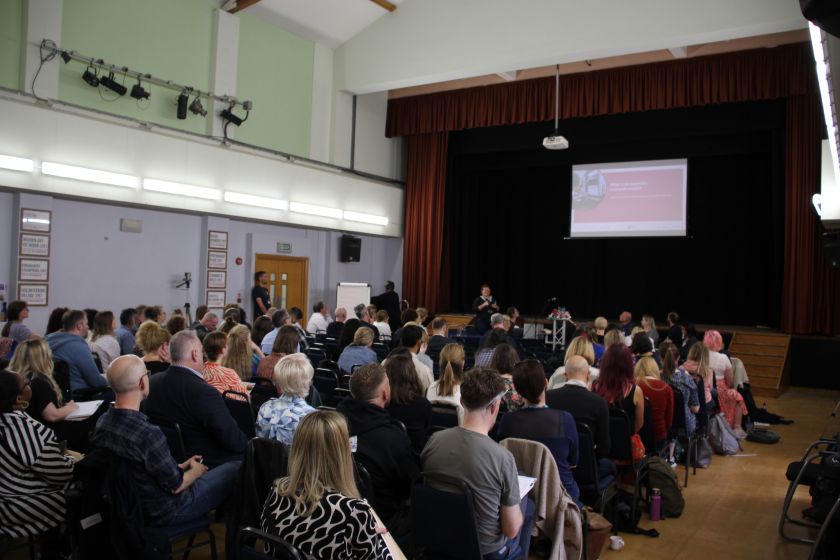Chaired by Mary D’Arcy, a consultant working with Common Projects, our final panel explored standards in TA, kicking off with Polina Pencheva, an Architect, who highlighted a significant loophole in the Housing Act where minimum space standards do not cover children. In practice, this means that a child under 1 is not taken into consideration but a child aged 1-10 is categorised as “half of a unit”. The reality of this, in a TA context, is that legally families with children can be placed in rooms that fall below the minimum space requirements for a single adult. Polina also stressed that the current legislation used for homeless shelters is largely unchanged since 1935 and that space standards must be updated to recognise the needs of children and people with disabilities to provide the best outcomes. This would include the provision of a cot for every baby, spaces to play, spaces to socialise, spaces for privacy and assistive technology to ensure accessibility.
Hannah Courtney-Adamson, Strategic Housing Lead (People) at Rochdale Borough Council shared a local authority approach to standards when need far outweighs supply and they are operating on deficit budgets. Hannah likened sourcing TA to “reshuffling the deck chairs”and said that LAs are backed into a corner where they have no choice but to rely on expensive nightly rate models to accommodate people. To navigate these challenges, Rochdale is working to ensure the Decent Homes Standard and Housing Health and Safety Rating System (HHSRS) are being applied, with quarterly meetings to make sure all internal / external properties are compliant. They are also looking at the children’s service practice standards and early help principles to see how these can be incorporated into the provision of TA.
Kadie, an expert by experience, described the horrific conditions her family endured while in TA: mice, mould, leaks, unreliable electricity, brown sludge, and a lack of basic household appliances. Kadie said her family were given just 1 hour to vacate their previous home and little support beyond given a key to TA that was unacceptable for anyone to live in, let alone a family with children for 3 years. While Kadie did raise this with the council, she was told there was nowhere else to move them to, which left her feeling like “you’ve got no voice” and “powerless”.
Our final speaker was Mike Anderson, Head of Housing and Setting the Standard (StS) at West London Alliance, who gave an overview of StS, London’s centralised TA inspection service which inspects and grades all nightly rate B&B, studio and hostel accommodation against agreed standards. The grading system has the following tiers: A-C is free of hazards with appropriate amenities, D has some category 2 hazards or missing certification and alerts LAs to potential risk, E is unsuitable and has a category 1 hazard or multiple category 2 hazards and LAs are warned not to use. Mike noted that worryingly, they are seeing more grade D ratings due to issues with fire doors, damp and mould, cold weather, and a lack of ventilation. To improve standards, Mike called for greater collaboration between providers, LAs, residents and specialists, more funding for enforcement of standards, and suggested linking rent prices to the quality of the accommodation to incentivise providers to uphold high standards.
We’d like to thank everyone who attended and spoke at the conference. We will continue to work towards a future where all stays in TA are short, safe and healthy and we look forward to working with you all to make this a reality.







